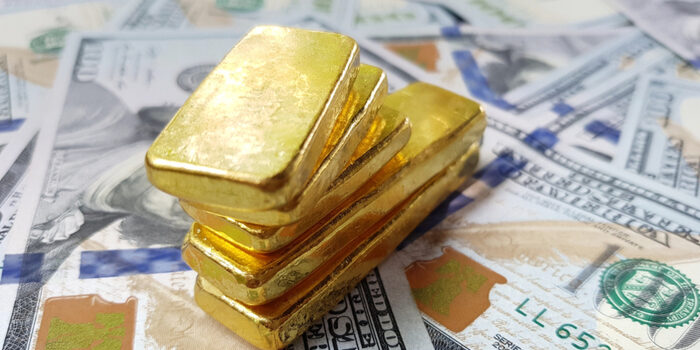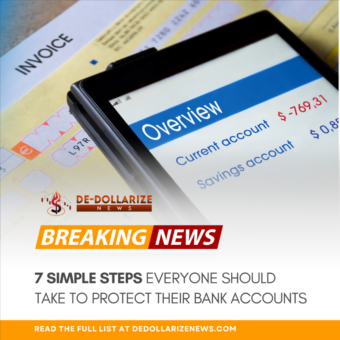
Why Owning Gold is More Critical Now Than Ever Before During the COVID-19 Pandemic
Although gold has been steadily rising since November 2018, its trajectory took an exponential turn when COVID-19, then a local virus originating within China’s Wuhan province, quickly transformed into the global pandemic we know today. What followed was a series of steep stock market sell-offs and rallies--all culminating in a massive plunge across all U.S. sectors. Yet through it all, gold remained within its upper range, despite a volatile short-term dip. Nearly two months after COVID-19’s spread, the yellow metal continues to surge higher.
Let’s take a step back. Early in March, the Federal Reserve announced that it would inject a whopping $1.5 trillion in short-term loans to banks in an effort to address “highly unusual disruptions” that has been going on in the repo markets since September of last year. The COVID-19 pandemic further complicated these ongoing disruptions. The Fed’s announcement did very little to assuage the markets as the stock sell-off only intensified over the following weeks.
On March 15, in the Feds 2nd emergency announcement, they revealed they would allow U.S. banks to drop their reserve requirements down to zero, which unleashed almost $1 Trillion in emergency money -- this cash is normally used to back customer deposits. They also slashed interest rates to near zero, leading most knowledgeable investors to realize that the Fed, if not entirely depleted of ammo, has very few tools left to buoy the economy in the face of the pandemic.
Coinciding with the Fed announcement, mid-March also marked the end of the eleven-year bull market in equities. The longest bull market in U.S. history had finally died. The S&P 500 had fallen -26%, a plunge comparable only to the crash of 1987--an event infamously dubbed Black Monday. From peak to trough, the S&P 500 had cratered -34% in just one month. Earnings forecasts for S&P 500 companies shifted from an optimistic 4.4% last December down to -5.2% for Q1, followed by a double-digit decline forecast in Q2, according to FactSet.
Along with the mayhem in U.S. markets, international markets haven’t fared any better. Interestingly, the U.S. dollar hasn’t exhibited the type of foreign exchange influx that’s characteristic of a flight to safety. In fact, greenback demand seems to have been dropping, arguably out of fear that the full brunt of COVID-19’s economic impact, compounded by the Fed’s “infinite Q.E.” would crush not only economic growth but also the value of the dollar.
But should this be much of a surprise? After all, with artificially low-interest rates fueling a debt-driven market for a little over a decade, who wouldn’t suspect the bull’s momentum to be nothing more than a balancing act on a house of cards? We just saw it crumble. But arguably, there’s every indication that what we’ve seen is only the beginning.
On March 22, St. Louis Fed Chief James Bullard announced that the U.S. unemployment rate could hit upwards of 30%, according to a Bloomberg article. Let’s put that into perspective: the unemployment rate during the Great Depression topped-off at 24.9%! If Bullard’s projection were to materialize, then such a scenario would truly be unprecedented-- the highest-ever recorded unemployment rate in U.S. history.
So, with the stock market in a critically vulnerable spot, a dollar whose value is once again under the threat of erosion, and a potential unemployment scenario that exceeds Great Depression territory, where else besides gold are we to find a reliable, safe-haven? Sure, gold does not offer yield (unlike bonds), nor does it offer dividends (unlike stocks). What it does offer is a means to hedge against declines in the purchasing power of paper assets, simply because its intrinsic value is arguably and historically the foundation of money itself.
Since its value isn’t tied to earnings (as in the case of companies) or monetary policy (you can’t create gold out of thin air), its value tends to hold steady during times of economic distress. And considering gold’s recent performance in relation to the broader market and the dollar itself, its continuing rise despite its relative price volatility is evidence of its recognized value.
Given the unknown economic factors, we face, and given the case that we can’t fully assess the fundamental impact that COVID-19 may still have on our economy until the pandemic itself is met with some form of resolution or termination, it’s reasonable to assume that gold still has quite a ways to go.
So, how much gold should you hold? Every financial advisor will hold a differing opinion. As for us, we suggest allocating between 35% to 50% of your portfolio to gold--an allocation we believe to be on the safe side—the safe side meaning both capital preservation and portfolio growth. Remember, gold is both a safe-haven and sound money. If there’s any pressing time to begin hedging your wealth, it’s during the opening moments of a major economic crisis. And that’s what we see now—the emergence of a disaster whose full potential scale we cannot yet imagine.
On an optimistic note, one principle we know to hold true is that the more complex a problem, the simpler the solution. Economic crises can often arise from underlying conditions too complex to understand, particularly as they unfold in time. Fortunately, the answer to crisis scenarios is comparatively simple, requiring no sophisticated knowledge but good old-fashioned common sense: invest in safe-haven assets. Many investors turn to cash or bonds. But when the value of the dollar is at stake, savvy investors turn to gold--as a means to hedge market downturns and purchasing power declines, and to establish yet another diversified return source. Gold has been a reliable safe-haven for millennia. And there’s no historical evidence to indicate that it’s long-term value as a safe-haven and sound money is over.
If you need a trusted source to advise you in gold purchases and allocations, call us at GSI Exchange. As a leader in precious metals, we firmly believe that very few companies can match our industry knowledge, market expertise, and dedication to clients. If you’re not already familiar with us, then feel free to check out our A+ BBB rating, our AAA rating with the Business Consumer Alliance, our Dunn and Bradstreet credit report, and our profile in the Forbes finance council. Or you can just call us at 833-GSI-Gold.
Also Read: Sold Out! How The Elite Made 100-Ounce Gold Bars A Hot Coronavirus Commodity
The financial market is crumbling and EVERYONE will be affected. Only those who know what's going on and PREPARE will survive... dare we say thrive. Our 7 Simple Action Items to Protect Your Bank Account will give you the tools you need to make informed decisions to protect yourself and the ones you love.








